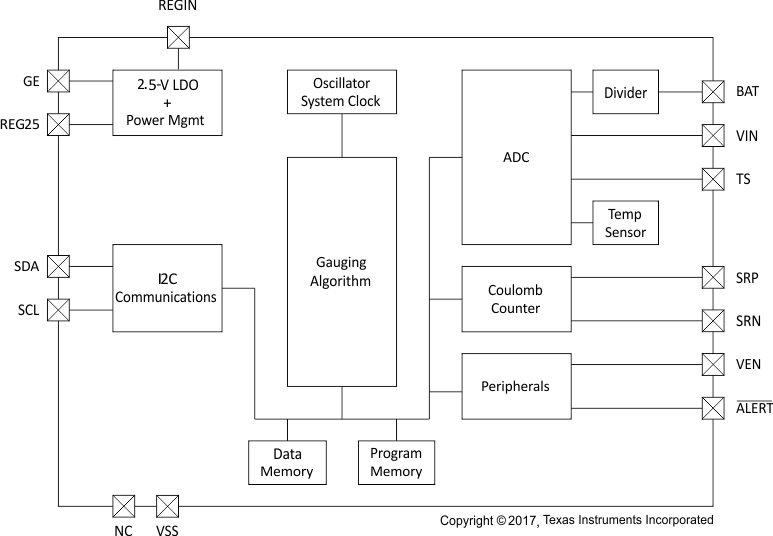SLUSCM6E June 2016 – April 2019 BQ35100
PRODUCTION DATA.
- 1 Features
- 2 Applications
- 3 Description
- 4 Revision History
- 5 Pin Configuration and Functions
-
6 Specifications
- 6.1 Absolute Maximum Ratings
- 6.2 ESD Ratings
- 6.3 Recommended Operating Conditions
- 6.4 Thermal Information
- 6.5 Power Supply Current Static Modes
- 6.6 Digital Input and Outputs
- 6.7 Power-On Reset
- 6.8 LDO Regulator
- 6.9 Internal Temperature Sensor
- 6.10 Internal Clock Oscillators
- 6.11 Integrating ADC (Coulomb Counter)
- 6.12 ADC (Temperature and Voltage Measurements)
- 6.13 Data Flash Memory
- 6.14 I2C-Compatible Interface Timing Characteristics
- 6.15 Typical Characteristics
-
7 Detailed Description
- 7.1 Overview
- 7.2 Functional Block Diagram
- 7.3 Feature Description
- 7.4 Device Functional Modes
-
8 Application and Implementation
- 8.1 Application Information
- 8.2
Typical Applications
- 8.2.1 Design Requirements
- 8.2.2
Detailed Design Procedure
- 8.2.2.1 Preparation for Gauging
- 8.2.2.2 Gauging Mode Selection
- 8.2.2.3 Voltage Measurement Selection
- 8.2.2.4 Temperature Measurement Selection
- 8.2.2.5 Current Sense Resistor Selection
- 8.2.2.6 Expected Device Usage Profiles
- 8.2.2.7 Using the BQ35100 Fuel Gauge with a Battery and Capacitor in Parallel
- 8.2.3 EOS Mode Load Pulse Synchronization
- 8.2.4 Benefits of the BQ35100 Gauge Compared to Alternative Monitoring Techniques
- 8.2.5 Application Curves
- 9 Power Supply Recommendations
- 10Layout
- 11Device and Documentation Support
- 12Mechanical, Packaging, and Orderable Information
Package Options
Mechanical Data (Package|Pins)
- PW|14
Thermal pad, mechanical data (Package|Pins)
- PW|14
Orderable Information
7.2 Functional Block Diagram
